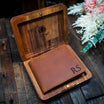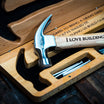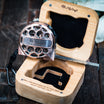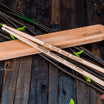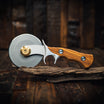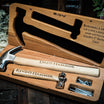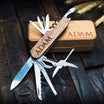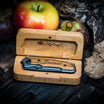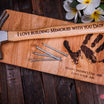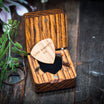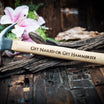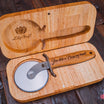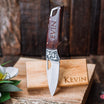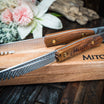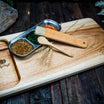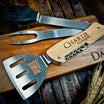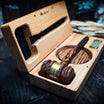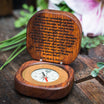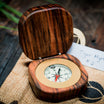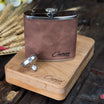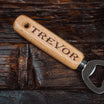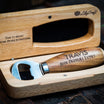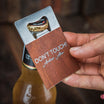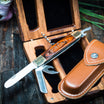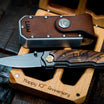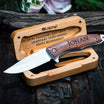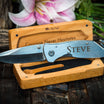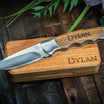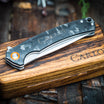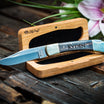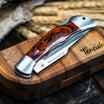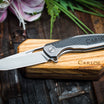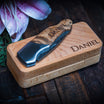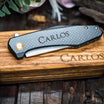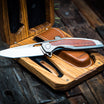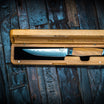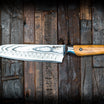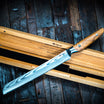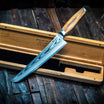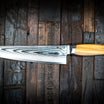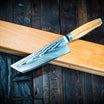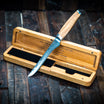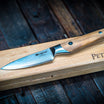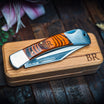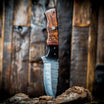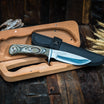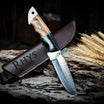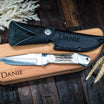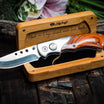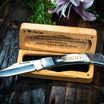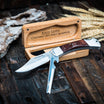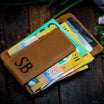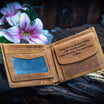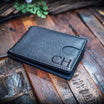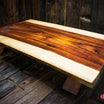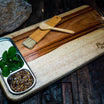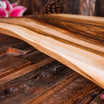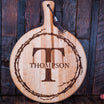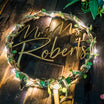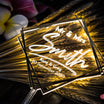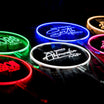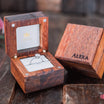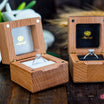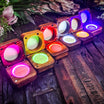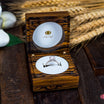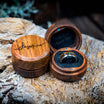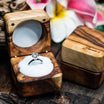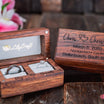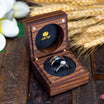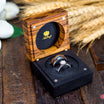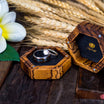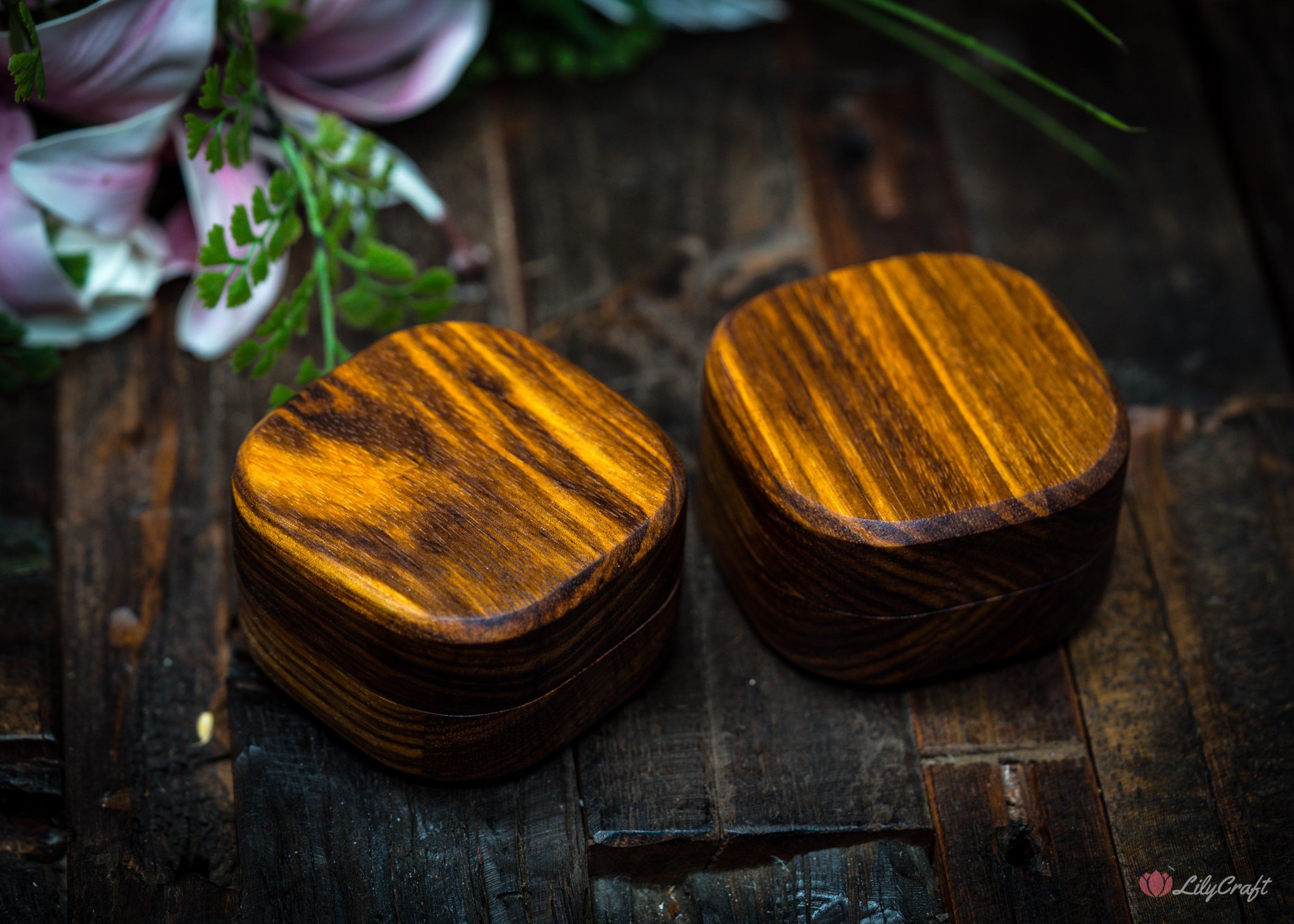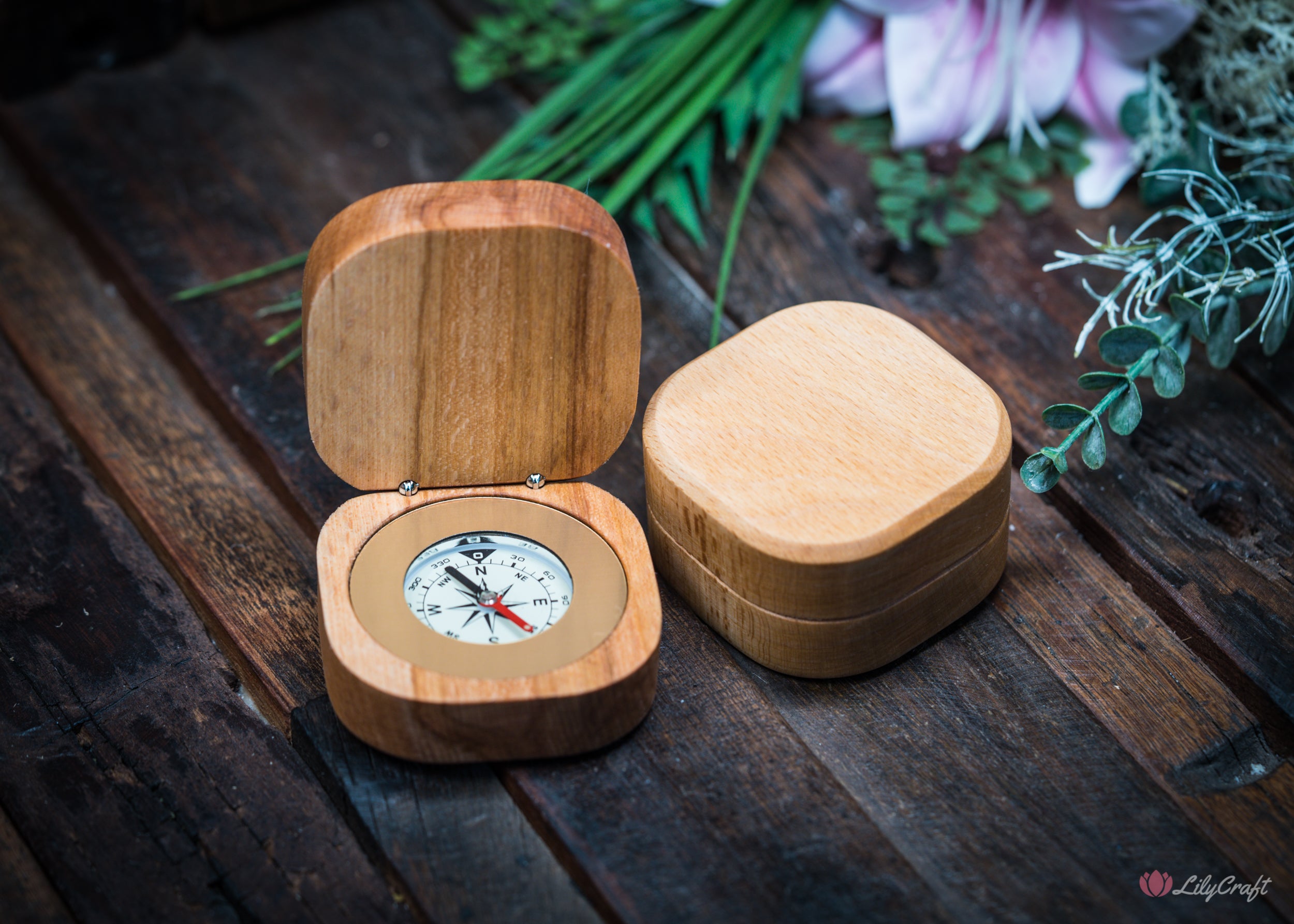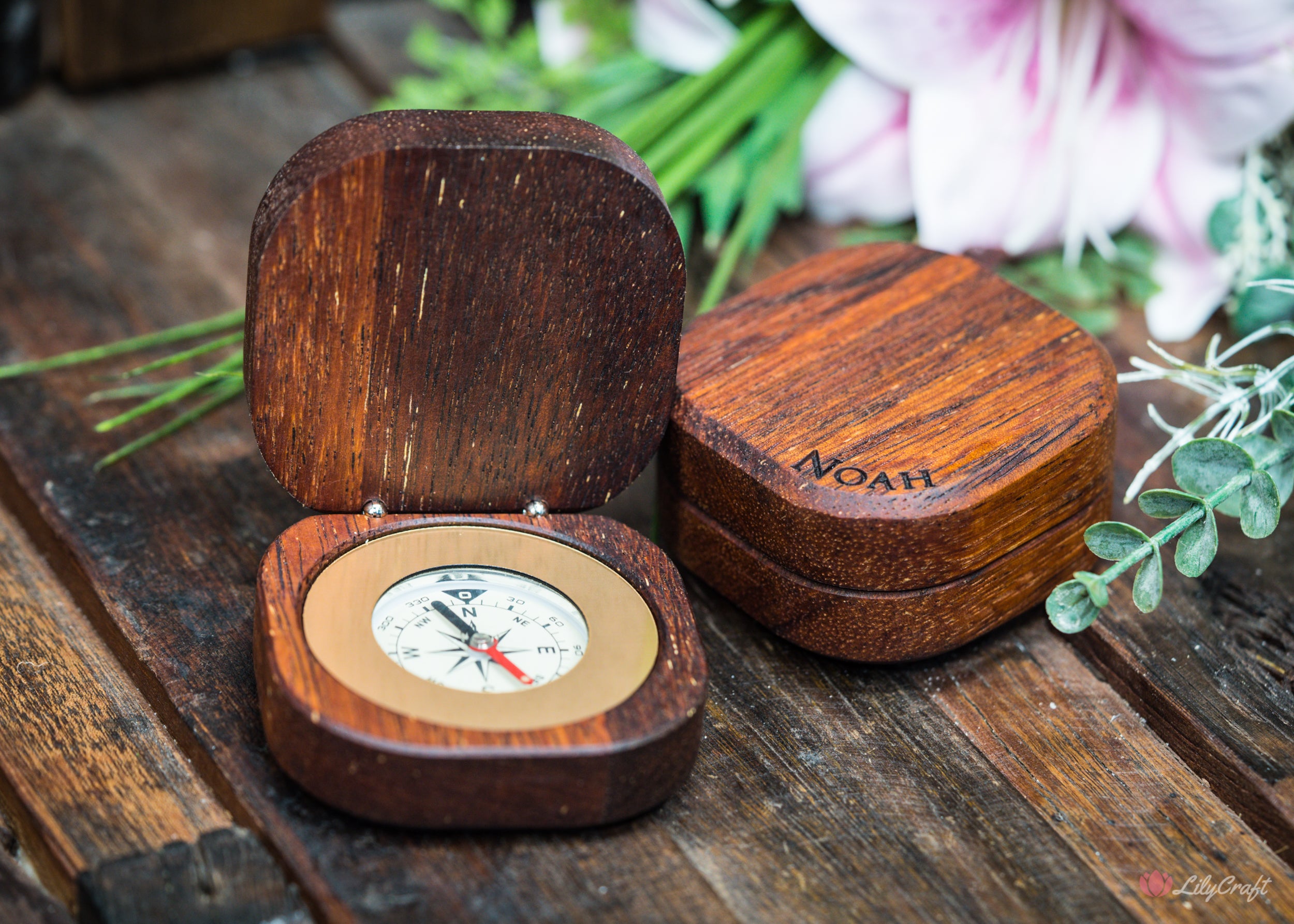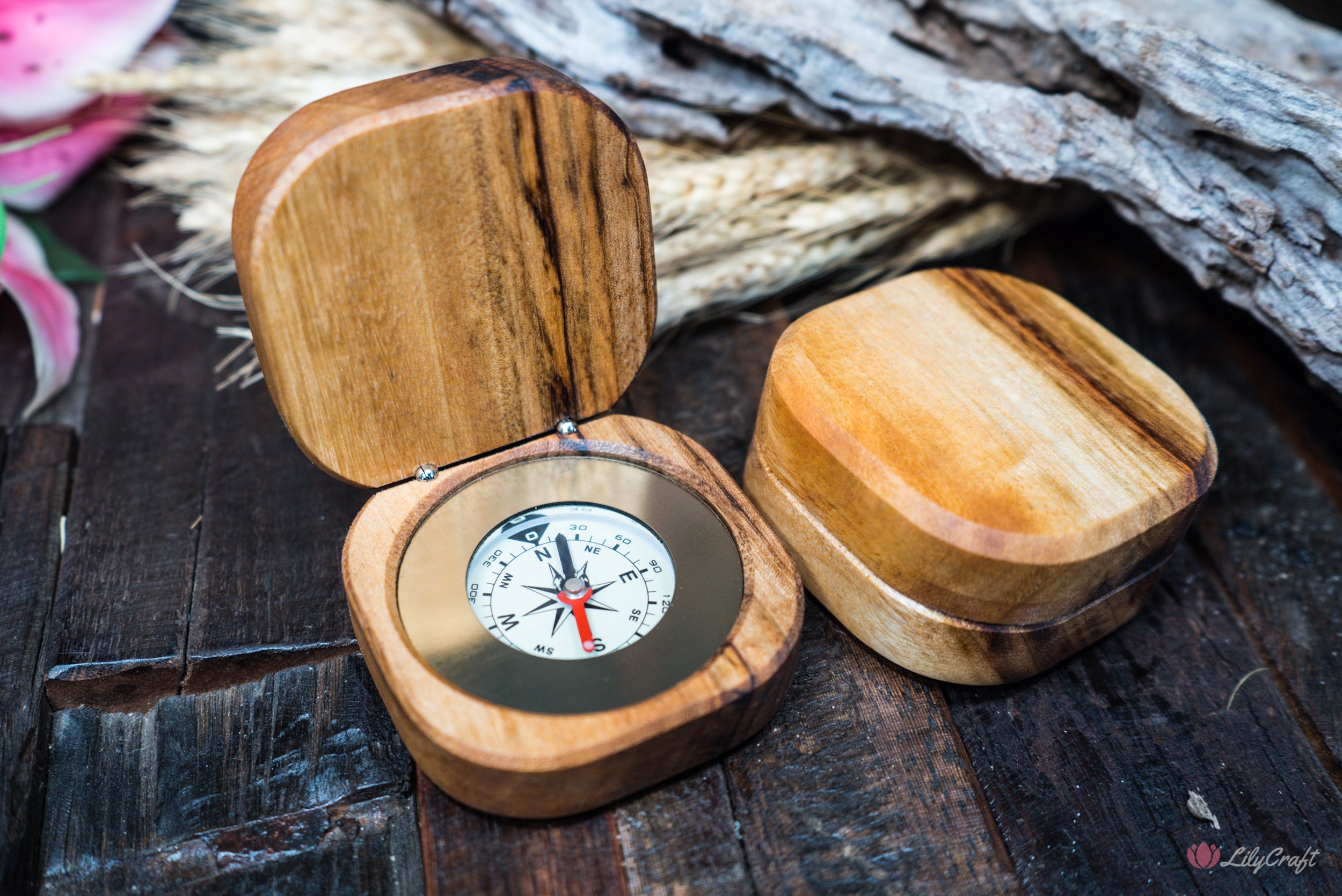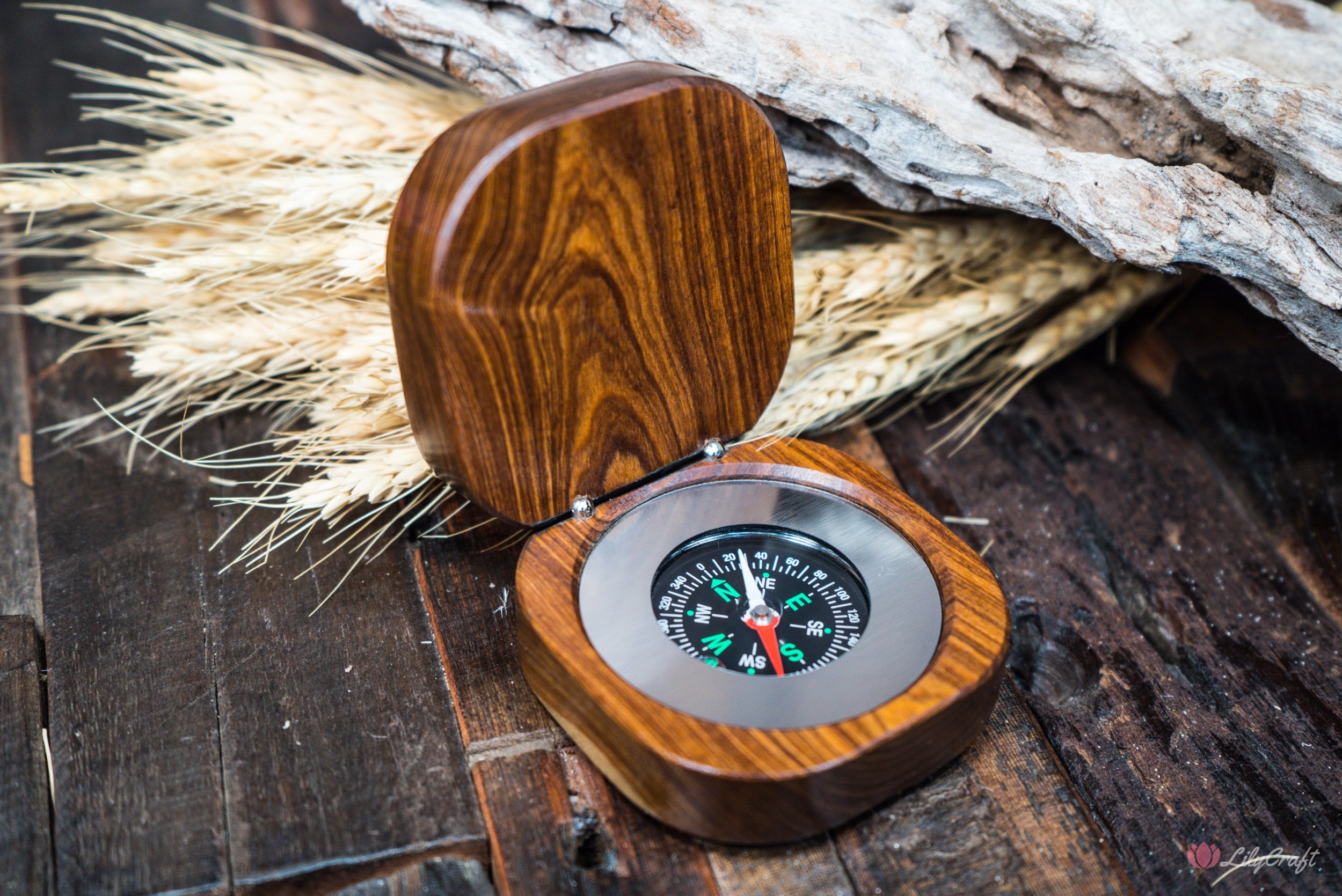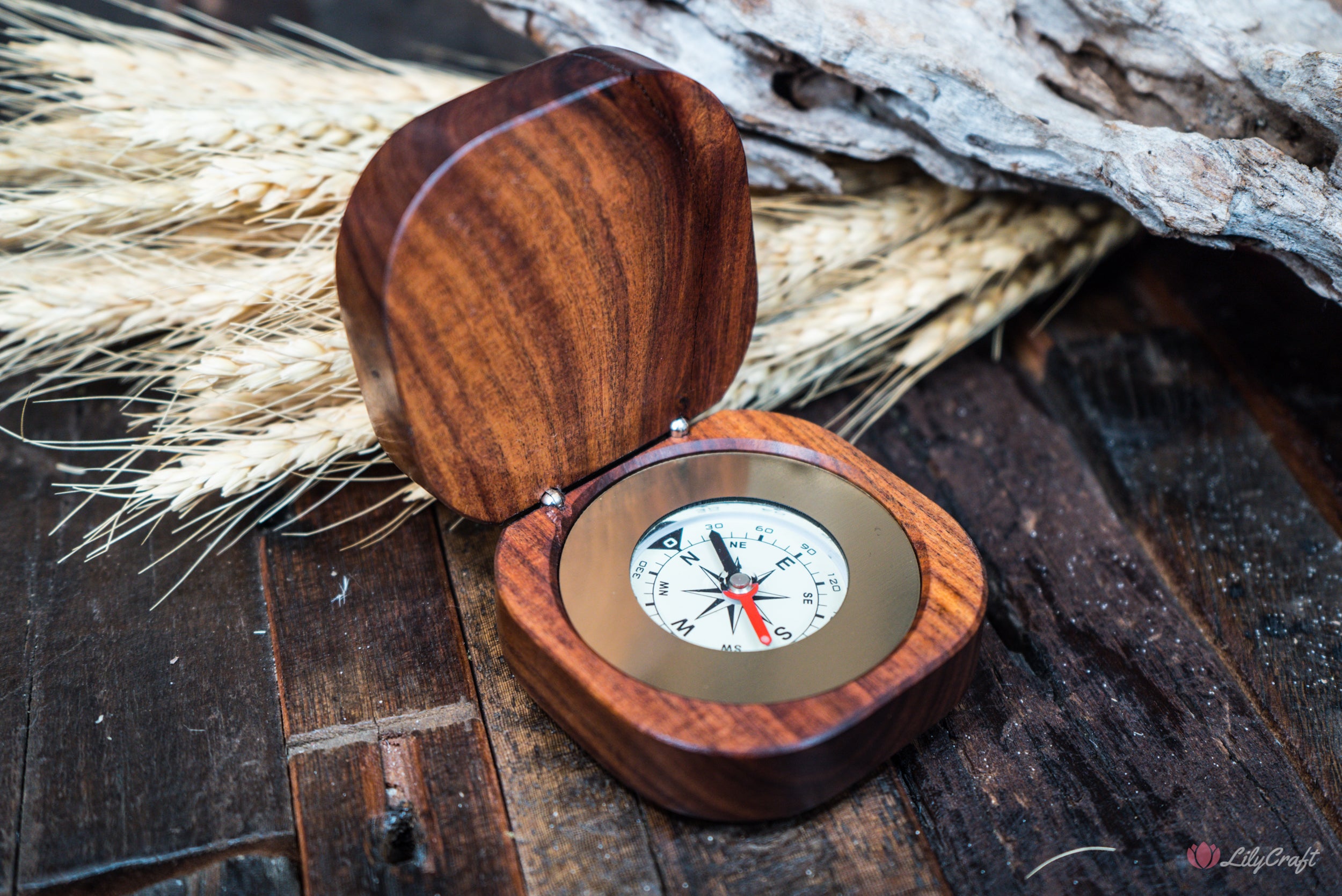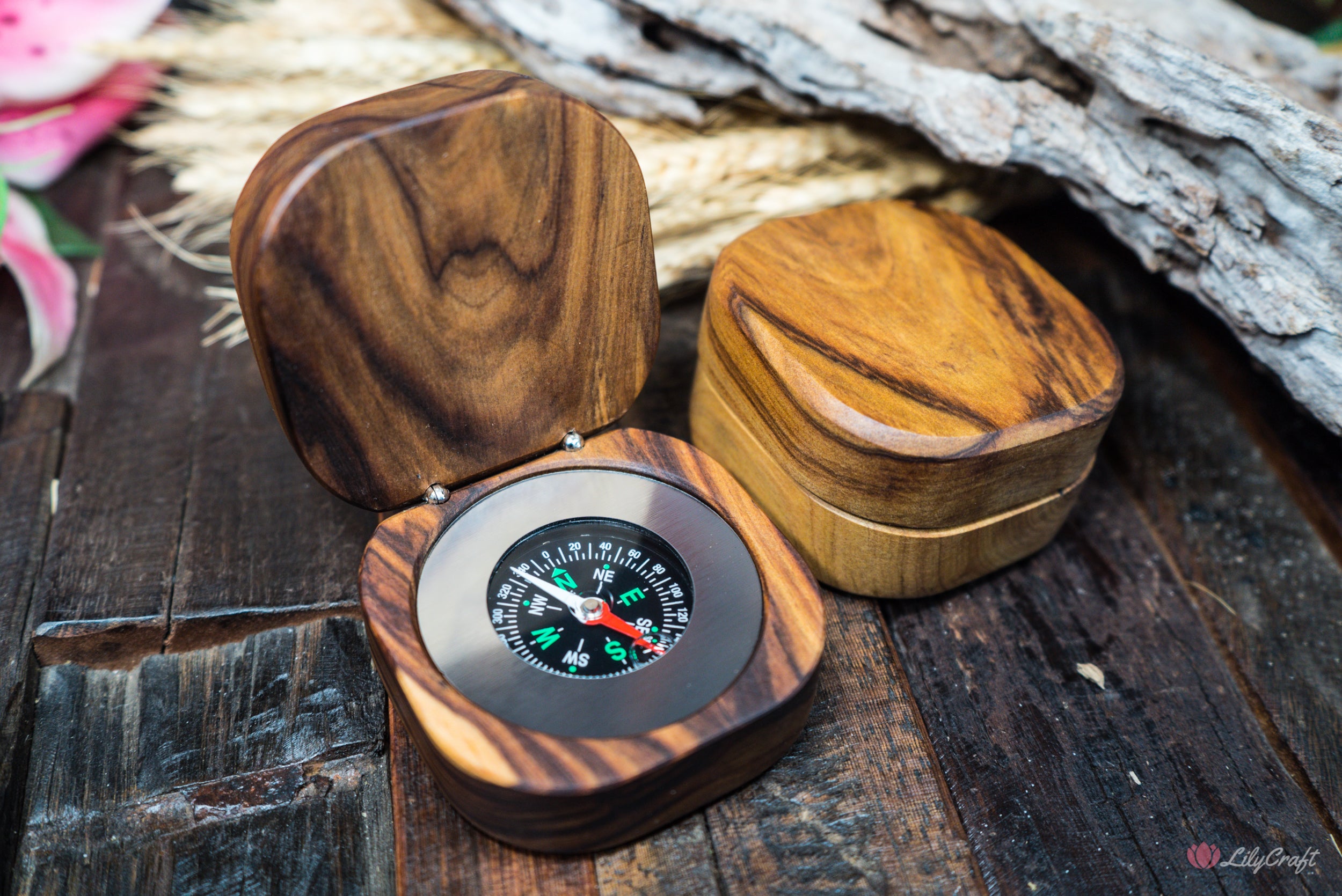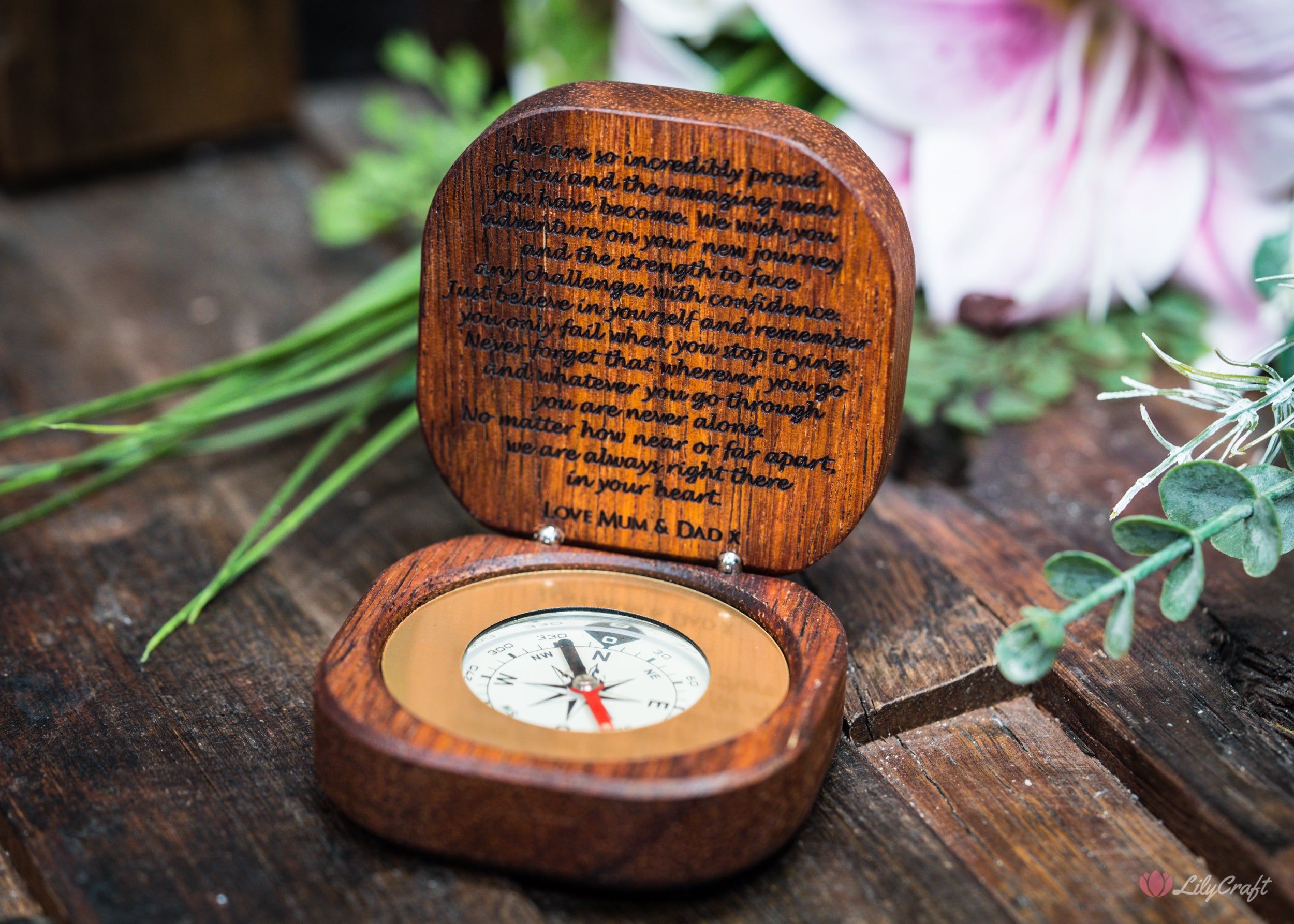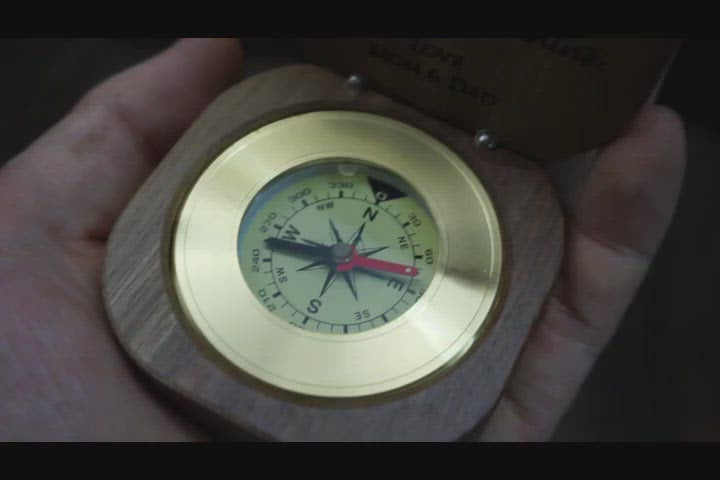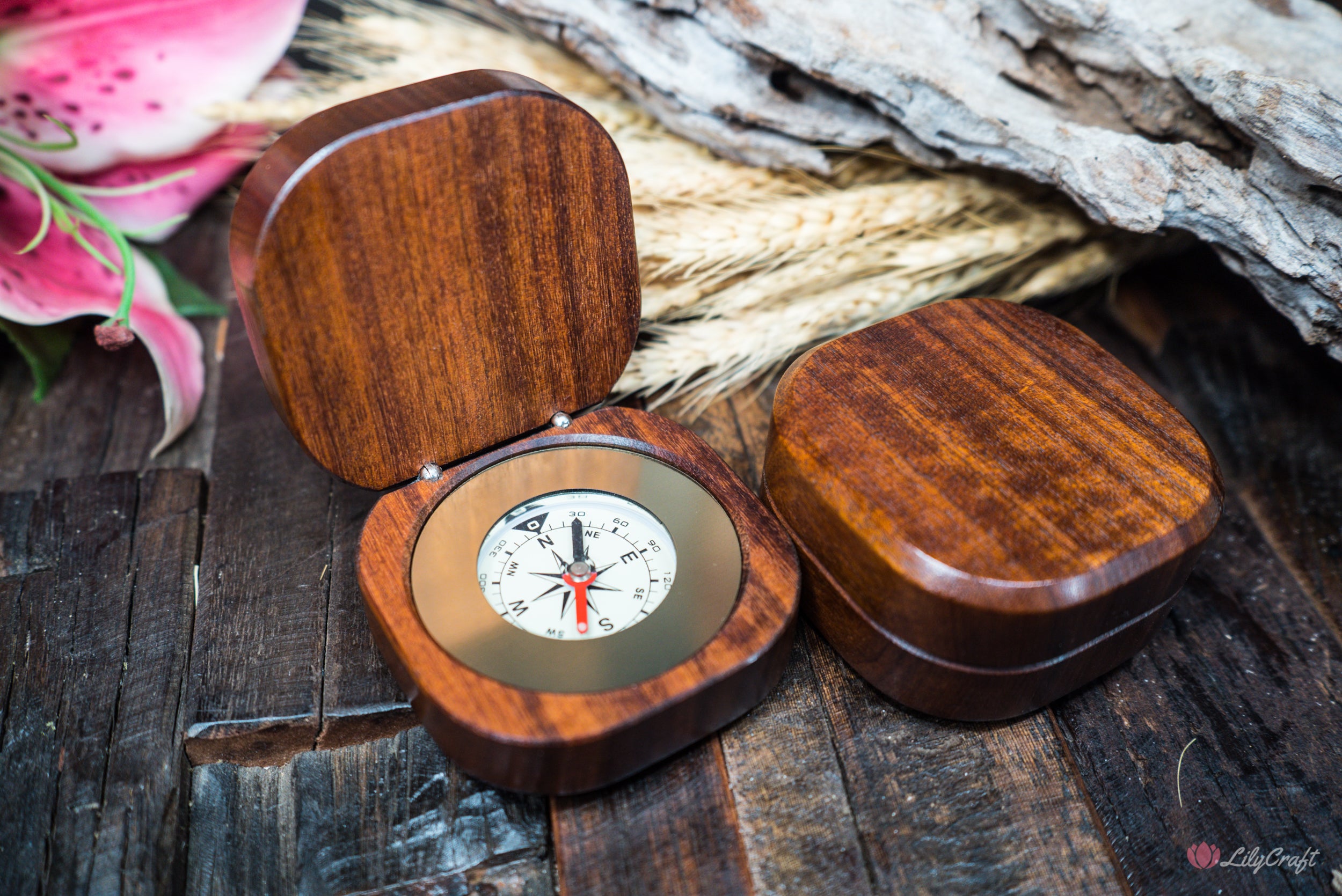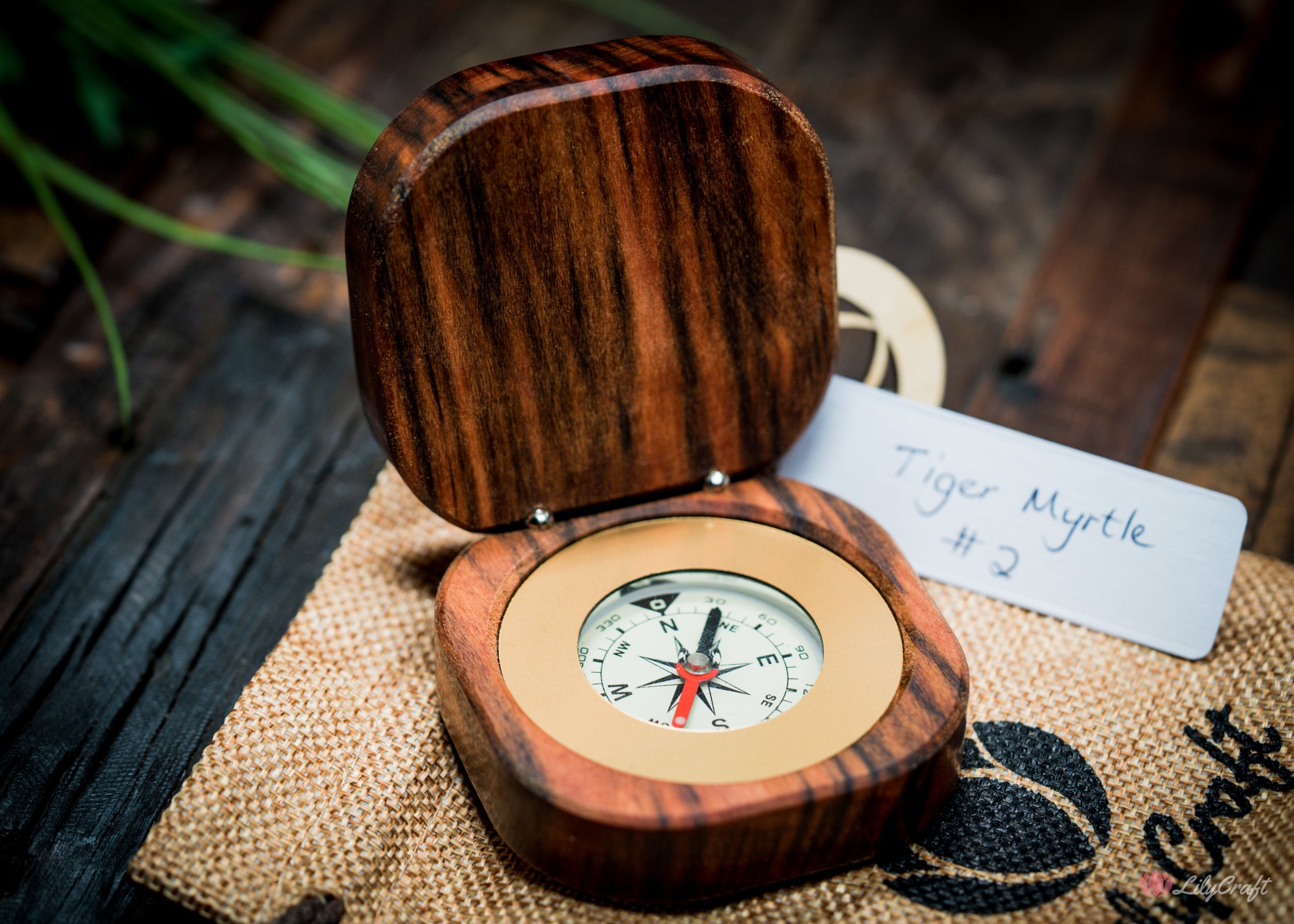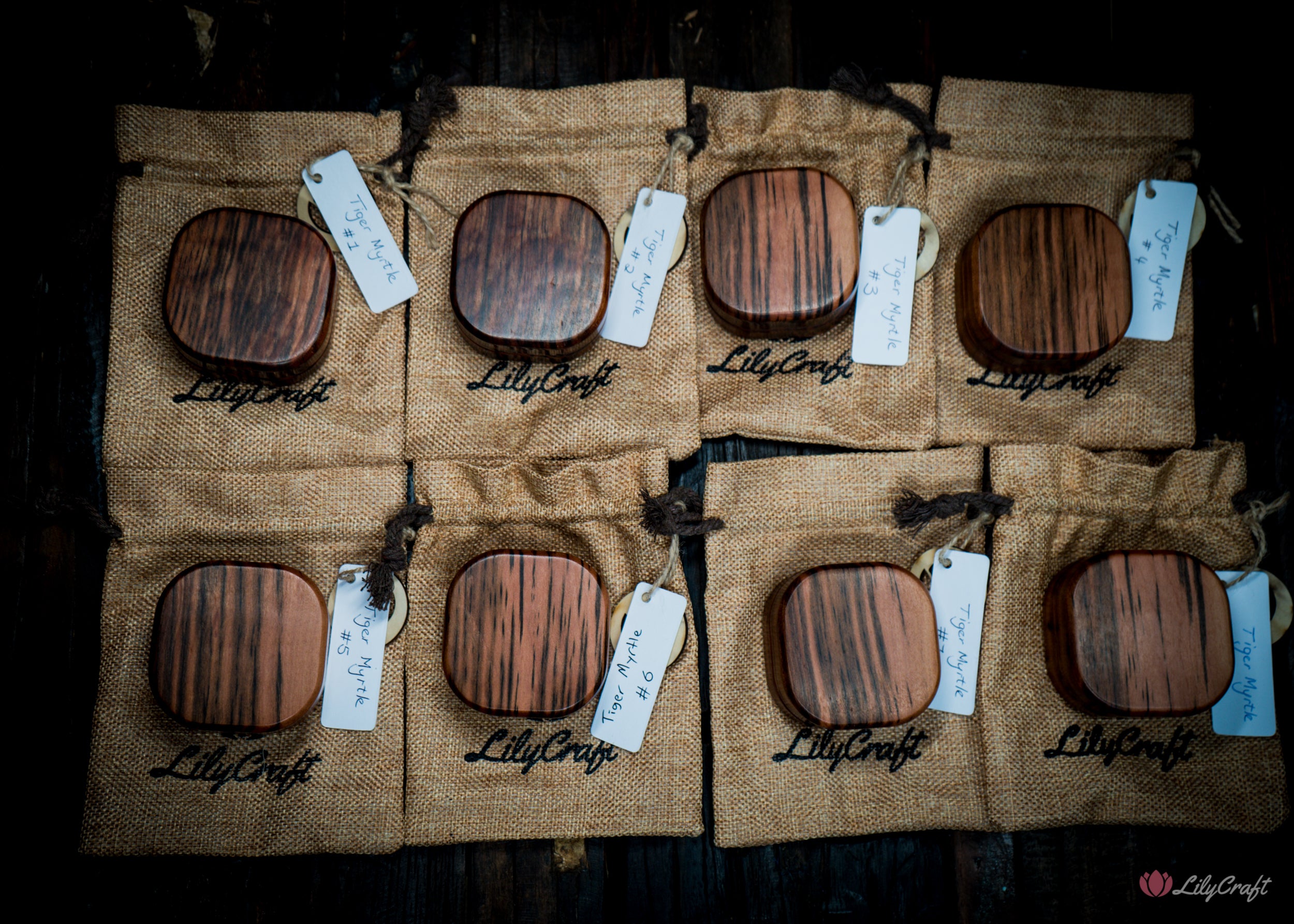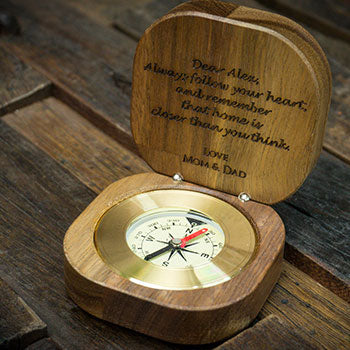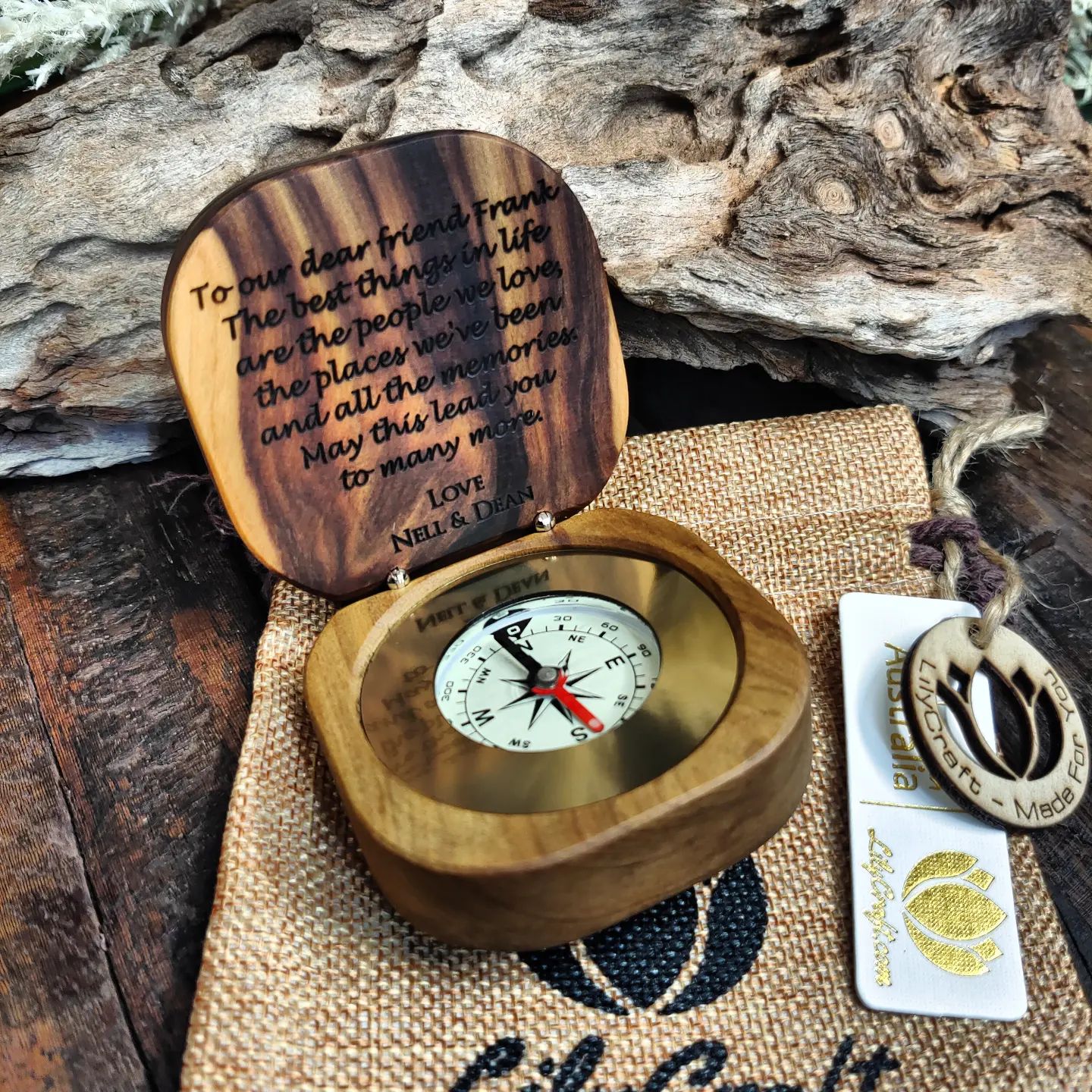
A Gift That Points Them Forward
Whether they’re retiring, graduating, or starting something new—a personalised compass says what words often can't: "You've got this."
Our handcrafted compasses are more than just instruments. They’re markers of big steps, new chapters, and the people we want to honour along the way. Built from solid brass and your choice of hardwoods, each one is a functional keepsake that guides, grounds, and gets passed on.
Timber Options
Every compass comes with your choice of solid hardwood – the real deal.
No stains, no fake finishes. Just proper timber, shaped by hand, sanded smooth, and finished with natural oil to let the grain speak for itself. Each one is unique, never to be repeated.
Filters
7 products
Compass Basics: Magnetic North vs. True North
Compass Basics: What to Know Before You Navigate
A compass doesn’t point to True North. It points to Magnetic North—a moving target influenced by Earth’s magnetic field. True North is the top of the world, used by maps. The difference between them is called magnetic declination, and depending on where you are, it can be small or several degrees off.
Smartphones and GPS units adjust for it automatically. A proper compass like this one doesn’t—so if you’re using it for serious navigation, you’ll want to look up your local declination and do a quick adjustment. If you’re gifting it or using it for general direction outdoors, it’s not something to stress over.
A few practical notes:
• These compasses are oil-filled, so the needle moves smooth and steady.
• If you’re near the magnetic poles (like Tasmania or parts of Canada), a slight tilt helps the needle spin freely.
• They’re great for hiking, camping, and everyday navigation. Not zoned for aviation or marine use.
This isn’t a toy. It’s a working, sealed compass made to be used and kept for life.
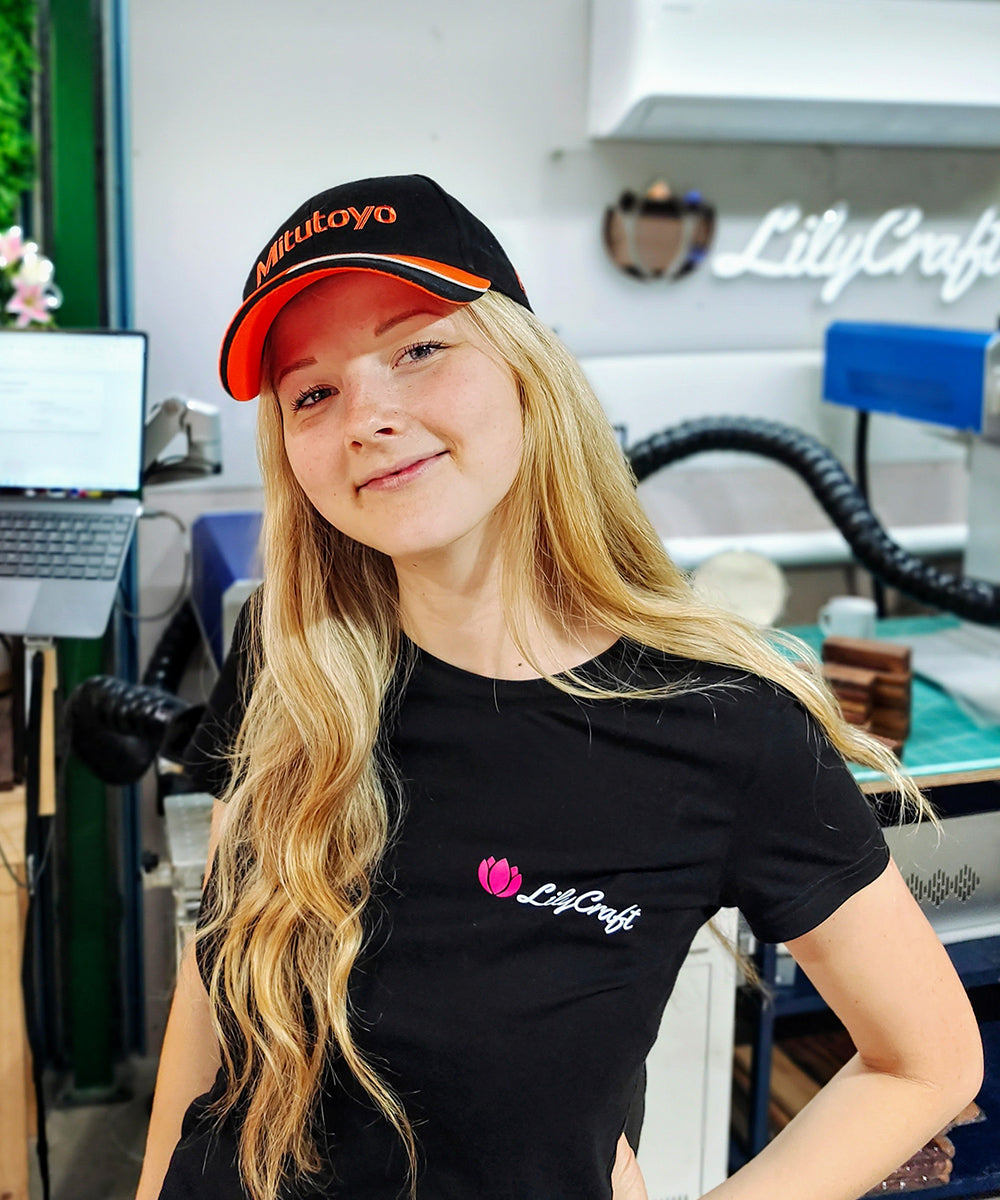
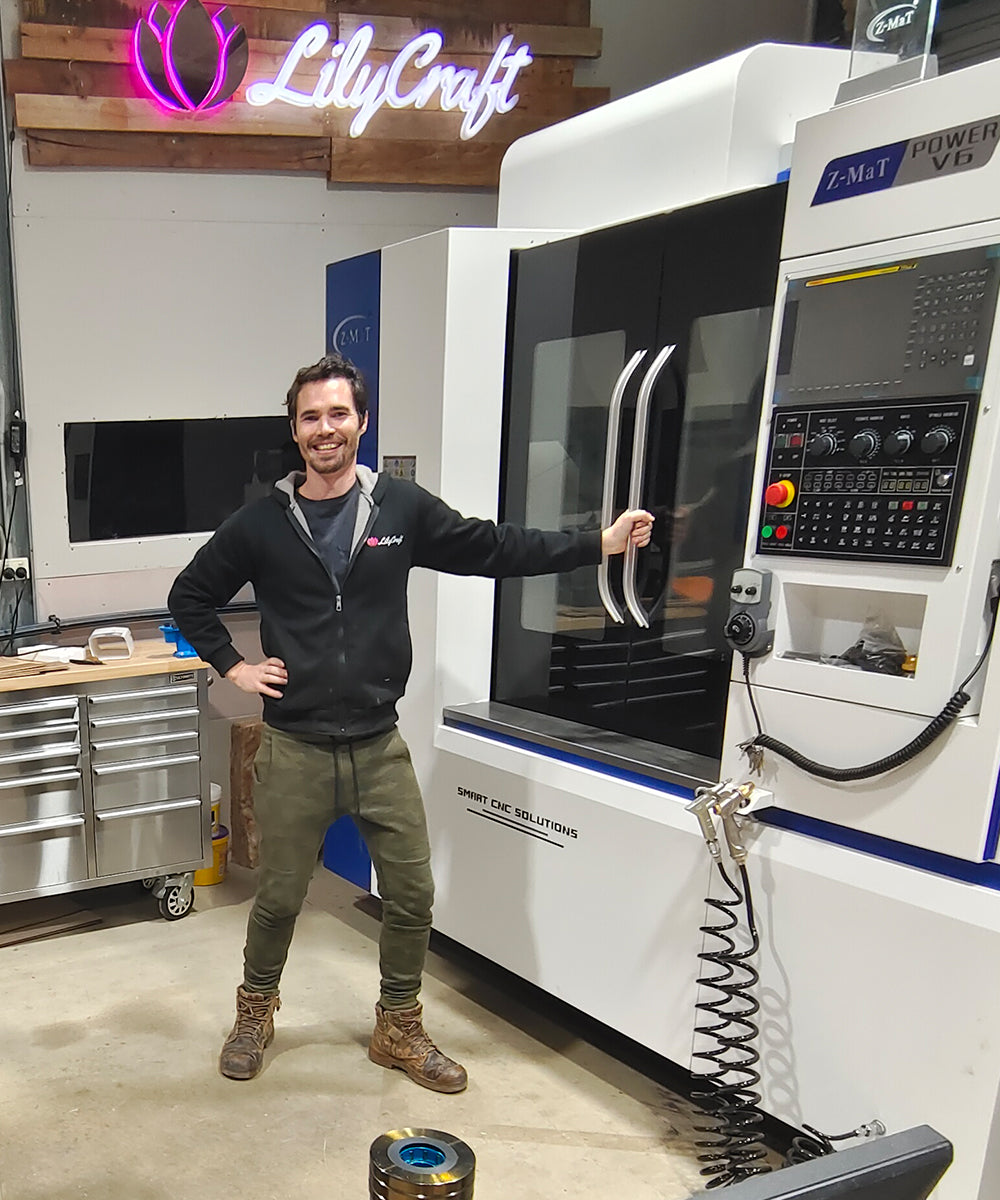
We’re not some faceless factory churning out generic gifts. We’re Carl and Saare – and this is our workshop in Brisbane, where every compass is crafted, engraved and packed by us and our small team. We take pride in what we make, and it shows in every detail — from the craft timbers that we choose, the way we polish the glass before we send it to you, to the way your order arrives.
Learn More About LilyCraftFrequently Asked Questions about our Compasses
Never used a compass before? Don’t stress — most people haven’t.
These are real questions we’ve had from customers, especially when giving one as a gift. Whether it’s for exploring the bush or just a good-looking desk piece with meaning, here’s what you might want to know.
Help! My needle is stuck what should I do?
Easy — it’s likely just had a bumpy ride on the way to you.
Give it a gentle tap on a solid surface to help the needle settle back into place.
If it still seems off, check if the needle is dragging against the clear window. Sometimes a bit of static builds up in transit and makes it stick. Just place your index and middle fingers on either side of the window — that usually clears the static and frees it up.
Is this a real working compass or just for show?
It’s fully functional. Dampened oil-filled movement, proper cardinal points. Built to guide and to last.
How do I actually use a compass if I’ve never used one before?
It’s not as complicated as it looks. Here's the simple version:
1. Hold the compass flat in your hand, so the face is level and the arrow on the base is pointing straight ahead — in the direction you want to go.
2. Look at the needle. The red end will always point north — that’s Magnetic North.
3. Now turn your whole body (not just the compass) until the red needle lines up with the ‘N’ on the dial.
4. Once they’re lined up, the arrow on the base is now pointing the way you want to travel.
You don’t need a map for that. This is just using your compass to keep heading in the same direction — like if you’re trying to walk in a straight line across a paddock or through the bush without veering off.
Do I need a map to use it?
Not always. If you’re just using the compass to stay on track or find your way back, it works on its own.
But if you are using a printed map, you can match it with the compass to work out directions properly — that’s where things like bearings and declination come in. But for everyday use? You don’t need to stress about that.
Why would I use this instead of my phone?
Phones are fine — until they run out of battery or lose signal.
A compass doesn’t rely on satellites, towers, or charging. It works anywhere, anytime, no matter what.
🎄 Merry Christmas & Happy New Year🎄 We’re taking a short break to spend some time with family and recharge after a big season. We’ll be back on Monday 12th January, and will start processing all orders and replying to messages that came in over the break then. Thank you so much for your support this season – it genuinely means a lot to us. ❤️





